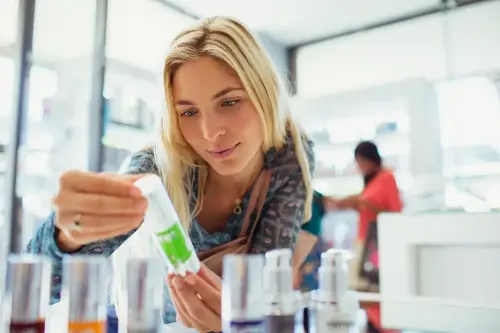
The skincare market is buzzing with big, scientific-sounding words like niacinamide, SPF, retinol, and the list is endless. It’s easy to get lured in when these bottles and packages promise tempting benefits right on the front in beautiful, aesthetic fonts. But how much of the actual hero ingredient is really in the bottle? The real story lies in the fine print, on the ingredient list. To make informed decisions, you need to read the skincare label to know the product's real composition and concentration.
Rashmi Aderao, Dermatology Consultant at Ruby Hall Clinic, Pune, shared a guide with us to help decode skincare labels and make smarter, skin-safe choices while shopping.
1. Red flag ingredients to look out for:
- Parabens (e.g., methylparaben, Propylparaben.) They are linked to hormone disruption.
- Fragrance/Parfum: A vague term that may include allergens and irritants, especially for patients with atopic dermatitis, it needs to be avoided
- Formaldehyde-releasing agents (e.g., DMDM hydantoin, imidazolidinyl urea): They are known irritants and potential carcinogens and are found in hair-smoothening procedures
- Phthalates: Common in synthetic fragrances, linked to reproductive harm.
- Avoid sunscreens with octocrylene, as it can break down into a chemical called benzophenone (which might cause cancer) and may also trigger allergic reactions.
2. Understanding ingredient order and concentration:
- Ingredients are listed in descending order by weight.
- The first 5 ingredients typically make up 80% of the product.
- Ingredients after 1% concentration may be listed in any order.
- Active ingredients like niacinamide or retinol are often effective in 0.5–5% range, so check where they appear.

3. Decoding common skincare terms:
- Hypoallergenic: Implies lower risk of allergic reaction, but not regulated—always patch test.
- Dermatologist-tested: Means the product was tested under a dermatologist’s supervision, but doesn’t guarantee safety or effectiveness.
- Non-comedogenic: Designed not to clog pores, suitable for acne-prone skin.
- Fragrance-free: Contains no synthetic or natural fragrance—ideal for sensitive skin.
- Clinically proven: Implies results were shown in trials, but the quality and scale of testing may vary.
4. Expiry date and shelf life:
- Unopened skincare products typically last 2–3 years; once opened, use within 6–12 months, depending on formulation.
- Changes in colour, smell, or texture may also signal that the product has expired.
- Always read labels carefully and focus on your skin’s specific needs when choosing a product.
ALSO READ: Skincare while travelling? Dermat shares smart hacks for plane, car and train rides
Note to readers: This article is for informational purposes only and not a substitute for professional medical advice. Always seek the advice of your doctor with any questions about a medical condition.
